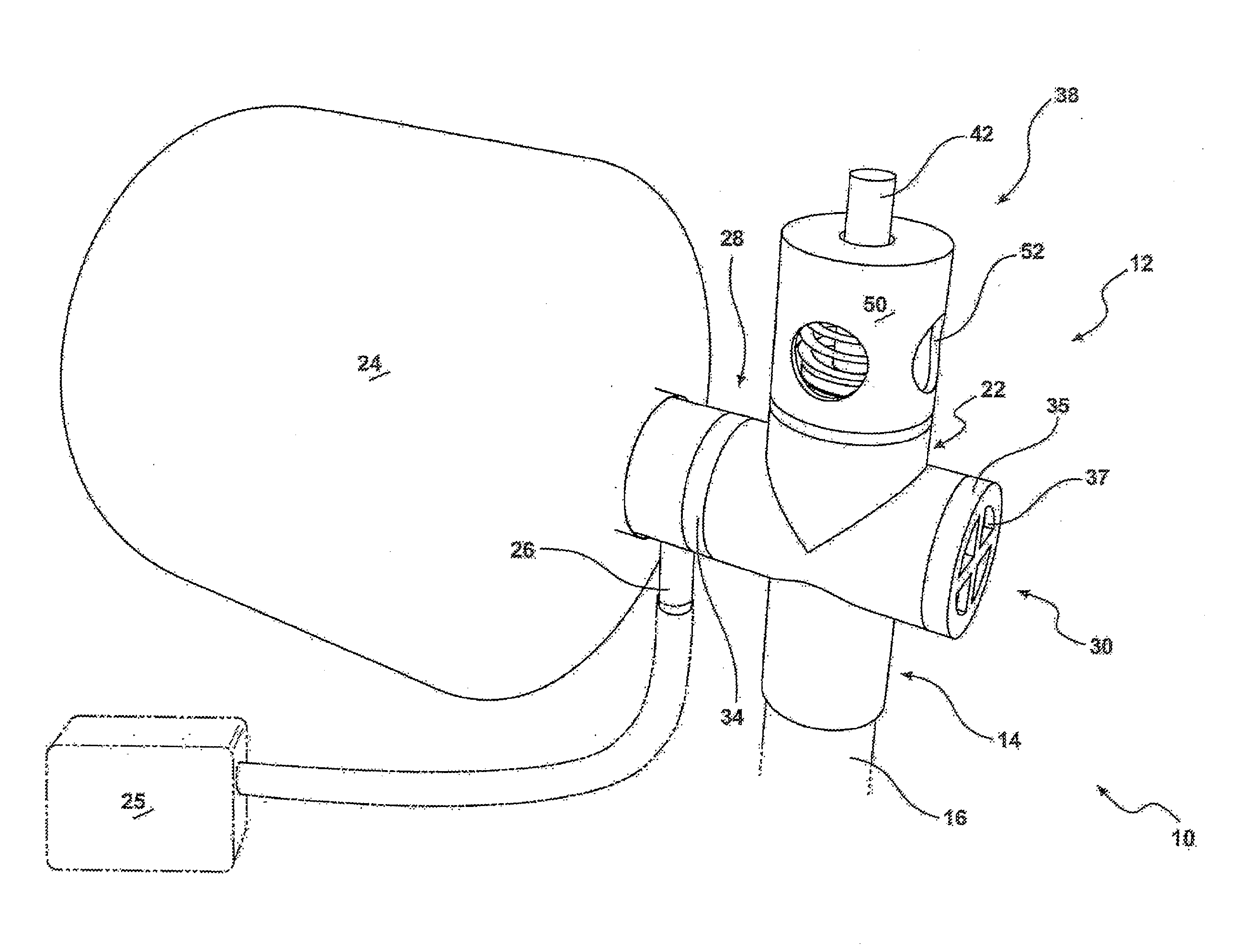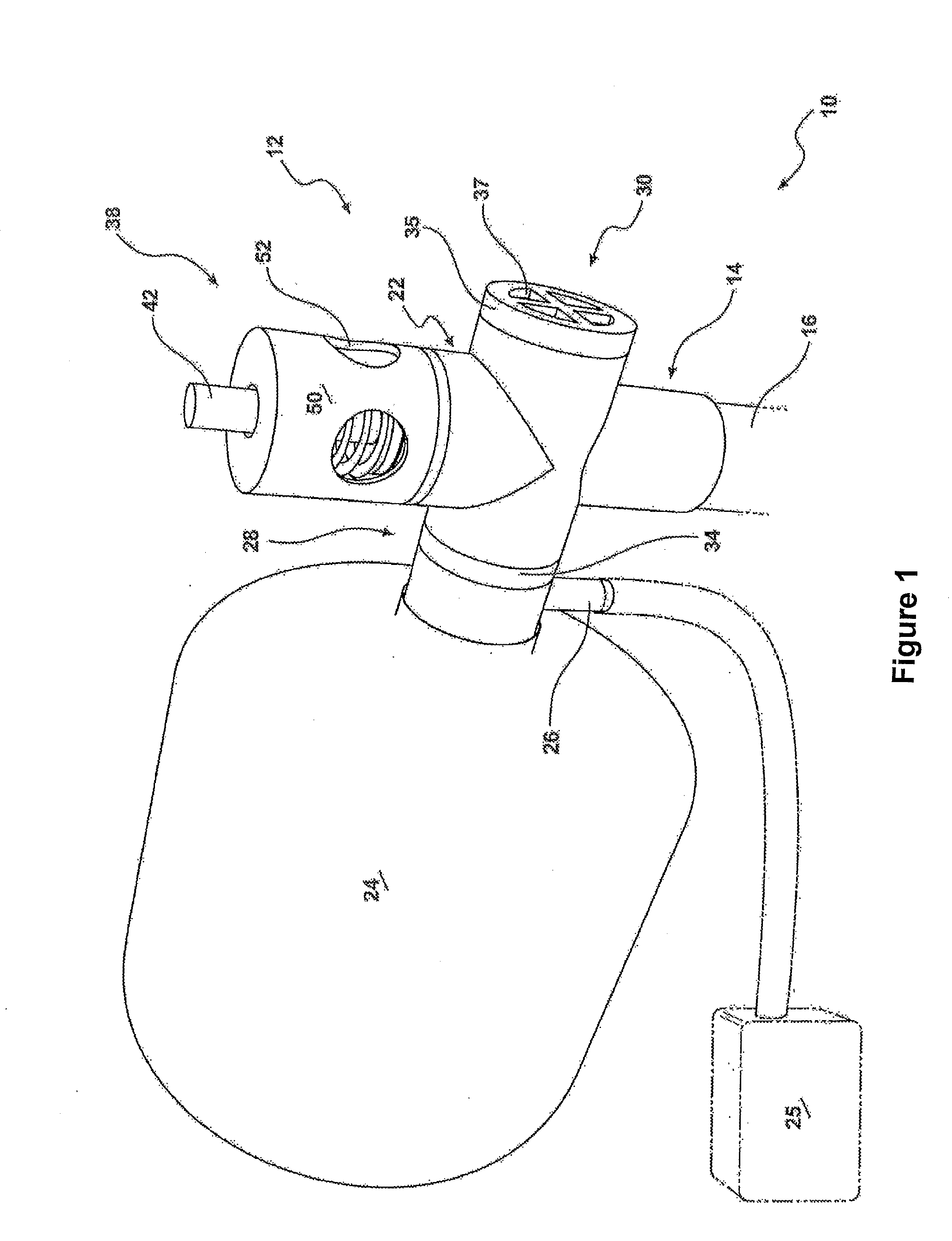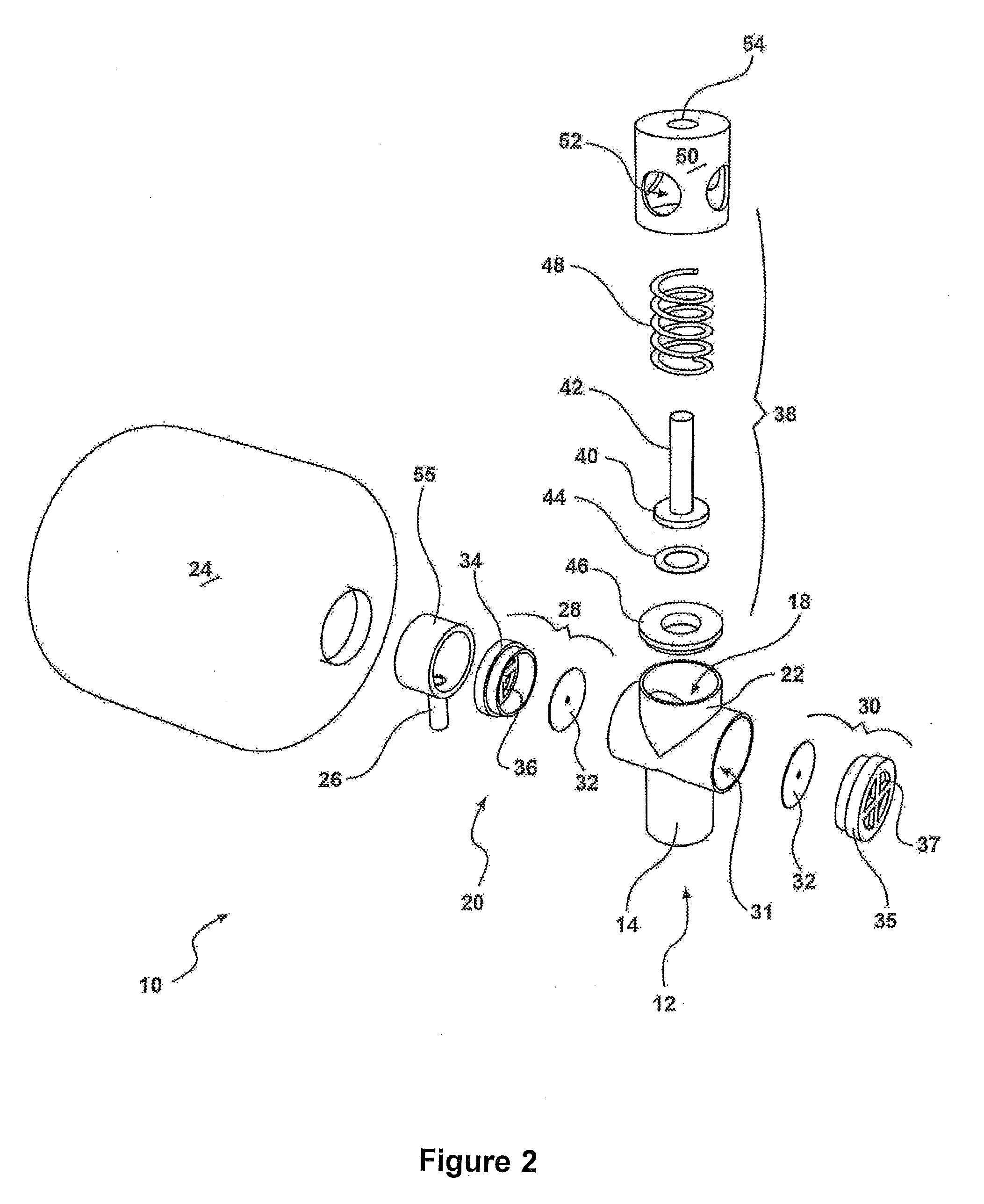Improved oxygenating apparatus
a technology of oxygenating apparatus and oxygenating chamber, which is applied in the direction of respirator, respiratory mask, trachea tube, etc., can solve the problems of low oxygen inspired fraction, low inability to ventilate the lungs of patients, so as to improve the efficiency of current use device, reduce the risk of desaturation, and improve the effect of oxygenation
- Summary
- Abstract
- Description
- Claims
- Application Information
AI Technical Summary
Benefits of technology
Problems solved by technology
Method used
Image
Examples
Embodiment Construction
[0069]Similar reference characters indicate corresponding parts throughout the drawings. Dimensions of certain parts shown in the drawings may have been modified and / or exaggerated for the purposes of clarity or illustration. Although the detailed description of the invention is directly primarily to the use of ETT and LMA on anaesthetized patients, the reader should appreciate that this is in no way intended to limit the scope of the invention, and the same or similar advantages are envisaged when the apparatus is used on non-invasive ventilation support face masks and nasal airway respiratory support devices.
[0070]Referring to the drawings for a more detailed description, there is illustrated a disposable oxygenating apparatus 10, demonstrating by way of examples, arrangements in which the principles of the present invention may be employed. The apparatus 10 includes a body portion 12 having a coupling 14 for attachment to an end 16 of an endotracheal tube, a tube of a laryngeal m...
PUM
 Login to View More
Login to View More Abstract
Description
Claims
Application Information
 Login to View More
Login to View More - R&D
- Intellectual Property
- Life Sciences
- Materials
- Tech Scout
- Unparalleled Data Quality
- Higher Quality Content
- 60% Fewer Hallucinations
Browse by: Latest US Patents, China's latest patents, Technical Efficacy Thesaurus, Application Domain, Technology Topic, Popular Technical Reports.
© 2025 PatSnap. All rights reserved.Legal|Privacy policy|Modern Slavery Act Transparency Statement|Sitemap|About US| Contact US: help@patsnap.com



